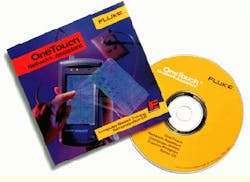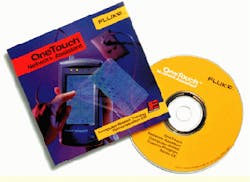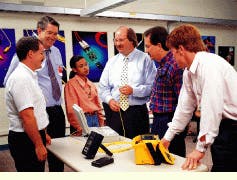Computer-based and Web-based training allow cabling installers to boot up and brush up.
Patrick McLaughlin
Professionals who design, install, and maintain the cabling infrastructure for today`s corporate networks must acquire a solid knowledge base and skill set. More and more, those in the cabling industry must be proactive in developing the necessary skills and knowledge, because the realm of what they must know is constantly expanding and changing. For many in the industry, computer-based training (CBT) and Web-based training (WBT) have provided learning opportunities with few restrictions. Trainees can often learn at their own pace, when time allows, without being constricted to a classroom schedule.
According to Barry Sullivan, director of multimedia learning products at Bellcore (Lisle, IL), business trends in the telecommunications industry have pushed corporations toward outsourcing their training for several years. Bellcore has trained approximately 800,000 people, many of whom work for telephone companies such as the regional Bell operating companies. "In the early 1990s, with the tough economic environment, training was among the first internal programs to be reduced by companies that were focusing on their core competencies," Sullivan explains. "Bellcore served the need created when companies opted to outsource training." As a training resource, Bellcore offers a diverse portfolio of delivery options. Among them are self-paced multimedia CBT and WBT programs, videos, audio products, as well as classroom instruction at internal locations, including the hands-on lab at Bellcore`s learning and living center in Lisle. Sullivan says, "Our training is designed to offer the right topics in the right format that best meets the users` needs. The magic is in the mix."
"Classroom training is sometimes difficult to cost-justify," says Mark Ross, telecommunications hardware manager at Parsons Technology (Hiawatha, IA), a software-development company. "Many budgets won`t allow for too much classroom training. You`re typically going to spend more than $1000 for a fiber-optics training course, plus travel expenses and time out of the office."
With the technological landscape changing as quickly as it is, maintaining an up-to-date instructor-led training course also has become increasingly difficult. So some training organizations have stepped up efforts to offer their services not only through class-room instruction, but through CBT or WBT as well.
Vendors reaching product users
Since July, 3M Telecom Systems Div. (Austin, TX) has offered training for its VF-45 fiber-optic connector via the World Wide Web. Tom Eades, 3M`s technical service manager, says that many considerations led 3M to go online with its training. "The sheer number of people who will have to be trained on the VF-45 was an influence," he says. He also points to another practical implication for the company. "The deployment and travel requirements of our trainers will be reduced. 3M has 50 technical service representatives who travel throughout the United States and internationally, teaching installers how to use our products."
He says that thanks to the online training, users can practice installation steps and be familiar with the product before the trainer arrives. "It gets students and trainers together on the same page."
Fluke Corp. (Everett, WA) offers a cd-rom training course that covers the use of its OneTouch Network Assistant test tool as well as other basic network troubleshooting. The course includes a section on cable testing, and Fluke estimates the entire course takes two hours to complete. "The screen is interactive," says Rene Kan, product marketing manager at Fluke. "The course simulates actual use of the OneTouch Network Assistant. Technicians touch the computer screen through a mouse click, just like they activate the actual test tool with a single touch."
A Fortune 100 company was one of the first users of the CBT course, Kan says. The corporation purchased several hundred OneTouch testers, could not justify sending all users to product training, and found the CBT course a convenient training method. The OneTouch course allows several users access using separate log-in names, Kan says. "Through bookmarking, the course keeps track of where each user is, so that person can pick up where he or she left off the previous session." When a trainee successfully finishes the course, the software generates a certificate of completion.
Kan also says that Fluke is working to update the course, and the next issue will include more interactive elements. The company is also considering putting the training course on the Web.
CBT versus WBT
Organizations that choose to participate in CBT or WBT often have another choice to make: which of the two they will employ. Each form appears to have some strong merits.
Bellcore`s Sullivan says that CBT benefits from advances in computing technology. "Personal computers have evolved into multimedia PCs and have allowed greater opportunities in computer-based training." Bellcore offers a wide range of self-paced training products, including CBT, many of which are multimedia in format. The company also offers self-paced training libraries bundled with a user-customizable intranet training-management system for Web delivery and administration.
Bellcore`s offerings also exemplify the extent to which a CBT provider can customize courses. Through Bellcore`s Network Learning Center, a corporation can implement a training program for its employees. The center gives the program administrator the opportunity to select courses, deploy courses over the Web, customize tests, and monitor student progress.
On the other hand, WBT has some benefits that trainees probably won`t find through CBT. "One attribute of the Web is that you can change it quickly," Sullivan says. 3M`s Eades says adaptability is a significant plus. "We are always incrementally improving our products after they are first released. A Web-based program that can easily be updated as our products change really helps when it comes to retraining product users."
Of course, cost is a consideration. Proponents point out that other benefits of CBT and WBT include consistent delivery, repeatability, mobility, remote distribution, prerequisite training, refresher training, reduced travel time and expenses, and reduced time away from the job--all of which result in cost-effective alternative training solutions. The CBT products from Bellcore are available for lease or purchase, Fluke`s cd-rom is available for purchase, and 3M`s VF-45 WBT is free. Fotec Inc. (Medford, MA), which sponsors the instructor-led and hands-on course "Cable University," recently put a free fiber-optics training course on its Web site.
Graphics and interaction
Another area in which CBT and WBT can differ is in the use of graphic elements. Sullivan asserts that some of the challenges inherent in WBT are not present in CBT. "The Web has its limits, and while there is a lot of hope and expectation about what will be accomplished through the Web in years to come, today may find that multimedia computer-based training courses offer more multisensory stimulation than they can get from a typical Web-based course."
The text, not the graphics, is the most essential part of the WBT course, according to Fotec president Jim Hayes. "We intentionally avoided being cute when developing the site," he says. "We didn`t design it to be fun; we designed it to be informational." He believes that is in line with the way people use the Web today: "The Web is a resource; it`s a library. It is a place where people anywhere in the world can access information for free."
3M`s Eades maintains that the company`s Web-based course engages trainees. "Nearly every screen is interactive: The student is actually doing something rather than simply reading text," he says. Eades is sometimes asked why the course is offered via the Web rather than on cd-rom. "One reason," he explains, "is that a cd-rom is in reality printed material. As such, it is susceptible to becoming obsolete. By offering this course through the Web, we can update it without having to redistribute information to every user."
Parsons Technology`s Ross believes graphics are a benefit. "Both graphics and interaction are good for the student. After 10 or 15 minutes of reading plain text, your mind can start to go in another direction. Graphics, especially when they are well-done, can capture the trainee`s attention."
In their proper place
Are CBT and WBT poised to take over instructor-led training as the learning method of choice among cabling-industry professionals? "No" was the consensus among those interviewed. Sullivan notes that instructor-led training represents the biggest portion of Bellcore`s offerings, and he says the same is probably true with most training organizations that offer multiple formats. "It`s interactive, it`s hands-on, and it`s an opportunity to network with peers who are also students," he says. "Those who learn technology must have a variety of outlets, including hands-on, classroom, and computer-based training. Those forms are often backed up by Web-based refreshers, videos, and other delivery methods."
WBT was never intended to replace instructor-led training, says 3M`s Eades. "Our Web-based VF-45 course is a good preparation for those who haven`t used or been trained on the product," he explains. "It`s also a good refresher for copper- cabling installers and electricians who only occasionally install fiber-optic networks."
Ross, who has taken 3M`s online course, backs up that statement: "My company is a Category 5 shop that intends to go to fiber in the near future. I participated in some classroom and hands-on fiber-optics training this past June and I`ve found the 3M Web course to be a very effective refresher. It will probably be more than a year between the time I took the classroom training course and the time I`ll be working with fiber on a daily basis. It would be very easy to forget a lot in that amount of time. The Web course helps me retain what I learned."
Fluke`s Kan says that the breadth of information cabling installers must know practically mandates different forms of learning: "Our cd-rom course is designed for a specific purpose. It is a low-cost way to train many people on both technology and products. Fluke sends trainers around the country for personalized training on the use of different products. And for emerging technological issues such as Category 6 cabling, Fluke also tours the world conducting classroom training."
According to Fotec`s Hayes, CBT and WBT can increase the demand for classroom training: "The first and most positive feedback I got regarding my online course was from professional trainers. It actually draws more people to their courses, because people who get an introduction to fiber optics and want to learn more will go to a classroom-type course with hands-on opportunities."
Overall, he says the introductory Web course "fits into our scheme of things. Fotec is primarily a test-equipment company, not a training company. For years, we have used training to promote test-equipment sales. By reaching more people through this Web course, we will create demand for test equipment and for more training programs."
Concludes Sullivan, "Undoubtedly, Bellcore`s use of intranets and the Internet as an online learning vehicle will continue to grow and expand dramatically, fueled by network bandwidth and multimedia capabilities. And as it grows, a shift from off-line, self-paced training to instructor-led virtual classrooms will occur. This will make the future an exciting place, allowing technology to enable learning to occur anytime and anyplace." He points out that the magic, as he puts it, will still be in the mix.
This demonstration copy of the OneTouch Network Assistant computer-based training program is available free of charge from Fluke.
Instructor-led training programs like this one conducted by the 3M Telecom Systems Div. can be more productive if students use computer-based or Web-based training as a prerequisite.


